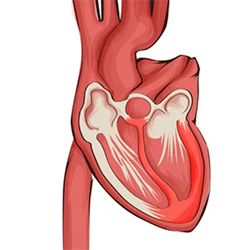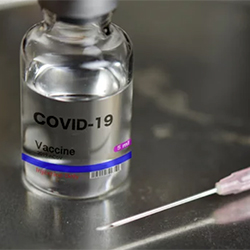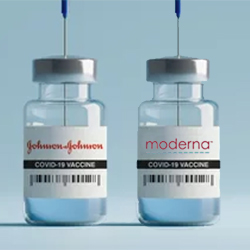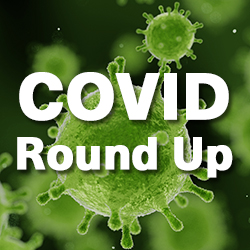By Gina Shaw
Myocarditis in young men who have received either the Pfizer-BioNTech or Moderna messenger RNA (mRNA) COVID-19 vaccine series, and thrombosis with thrombocytopenia syndrome (TTS) or Guillain-Barre´ syndrome (GBS) after the Johnson & Johnson (J&J, Janssen) COVID-19 vaccine, continue to be identified as known potential adverse events from these vaccines, according to several expert presentations at the CDC’s Advisory Committee on Immunization Practices (ACIP).
However, these events are rare, the experts said.

“Evidence from multiple safety monitoring systems in multiple countries supports the finding of an increased risk of myocarditis and myopericarditis following mRNA COVID-19 vaccination, with the risks higher in adolescents and young adults, and higher in males than in females,” said Tom Shimabukuro, MD, MPH, MBA, the deputy director of the CDC’s Immunization Safety Office, who leads the vaccine safety team for the CDC’s COVID-19 Vaccine Task Force. “Myocarditis incidence is higher following dose 2 of the vaccine compared with dose 1, and we see onset clusters within a few days of vaccination, mostly within a week. Cases have tended to be clinically mild.”
Some surveillance systems show a greater risk after the Moderna vaccination compared with Pfizer, including the U.S. Vaccine Safety Datalink (VSD) and Department of Defense, as well as Canada and Scandinavian countries, reported H. Keipp Talbot, MD, MPH, the chair of the CDC’s COVID-19 Vaccine Safety Technical Work Group and an associate professor of medicine in the Division of Infectious Diseases at Vanderbilt University Medical Center, in Nashville, Tenn. Other U.S. safety monitoring systems, including the Vaccine Adverse Event Reporting System (VAERS), the FDA’s Biologics Effectiveness and Safety system, and the Department of Veterans Affairs, do not show a difference in myocarditis rates between the two mRNA vaccines.
Based on the overall data, Dr. Talbot said, “there appears to be a slightly increased risk of myocarditis among 18- to 39-year-olds after Moderna compared with Pfizer vaccination. Preliminary data from follow-up study, based on data from patients and parents, suggest that cases are generally mild, with prompt resolution of symptoms.”
As of Oct. 13, 2021, there has been 47 confirmed cases of TTS identified after 15.3 million J&J COVID-19 vaccinations, Dr. Shimabukuro reported. Most cases are in women between the ages of 18 and 49 years. There have been five deaths related to complications from TTS after vaccination, with four of the five deaths in women. All five had cerebral venous sinus thrombosis; they ranged in age from 29 to 52 years, with a median age of 37.
“Current evidence suggests a causal association for TTS, although the condition is rare,” Dr. Shimabukuro said.
Monitoring in VAERS and VSD also suggests a possible association between GBS and J&J COVID-19 vaccination. “Through July 24, there were 130 reports of GBS after the Janssen vaccination in VAERS, with observed reports higher than expected across multiple age groups,” Dr. Talbot said. “It’s important to communicate to the public and patients the balance of benefits and risks.”
Heterologous Boosting
Concerns over these risks appeared to be one factor underlying the ACIP members’ choice to specifically adopt broad language that permits heterologous booster dosing in their unanimously endorsed recommendations for the COVID-19 vaccines. This mix and match recommendation means that a booster-eligible patient who received a Pfizer-BioNTech or Moderna mRNA primary vaccine series is free to receive a J&J booster, and vice versa.
Although presenters to the panel suggested that the risk for these severe adverse events was no more likely after a booster dose than a primary dose, panel member Sarah Long, MD, a professor of pediatrics in the Section of Infectious Diseases at Drexel University College of Medicine, in Philadelphia, observed that it was difficult to draw those conclusions based on available data. “Certainly with TTS and GBS, we have not had enough second doses of Janssen administered to evaluate such rare and serious adverse events,” Dr. Long said.
In her presentation, Dr. Talbot reported that approximately 9,000 patients have received at least two doses of the J&J vaccine at least two months apart, with approximately 2,700 having reached at least two months of follow-up.
“This weighs heavily on me,” Dr. Talbot agreed. “The opportunities for these heterologous boosters are priceless, offering clinicians the ability to offer young women an mRNA booster and a young man a Janssen booster and potentially avoid these risks. We’re in a different place in the pandemic than we were earlier, with vaccines readily available, and we can take the time to be much more thoughtful and careful when we weigh the benefits and risks.”




